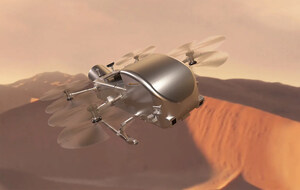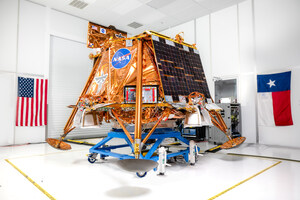WASHINGTON, Aug. 8, 2014 /PRNewswire-USNewswire/ -- NASA has selected 23 proposals from small business and research institution teams to continue the development of innovative technologies that will support future agency mission needs and may also prove viable as commercial products and services.
The Phase II selectees in NASA's Small Business Technology Transfer (STTR) Program are permitted to enter negotiations for possible contract awards, worth a combined total of approximately $17.2 million.
Technologies selected for further development under STTR Phase II will demonstrate the feasibility of new propellants for in-space propulsion, increase capabilities to perform autonomous navigations, and advance new methods for the manufacturing of advanced materials. High-tech firms in 13 states also have submitted selected proposals in partnership with research institutions spread out among 15 states.
"As teams in our Small Business Technology Transfer Program move into this second phase of development, we'll see innovative concepts mature into technologies that can enhance our exploration plans on journeys to asteroids and Mars, while benefitting our technology based economy here on Earth," said Michael Gazarik, NASA's associate administrator for space technology in Washington. "Through modest investments in technology development among American small business and research institution teams, we're developing the new knowledge and capabilities needed to keep NASA leading the way forward in space exploration, while also keeping America in the lead in high-tech business enterprises."
The STTR Program uses a highly competitive, three-phase award system that provides collaborative opportunities between qualified small businesses, including women-owned and disadvantaged firms, and research institutions to address specific technology gaps in NASA's programs. Selected projects provide a foundation for future technology developments and are complementary to other NASA research investments.
Firms and research institutions that participated in Phase I of the STTR program submitted 32 Phase II proposals. Selection criteria included technical merit and innovation, Phase I results, value to NASA, commercial potential and company capabilities.
Under Phase I teams performed feasibility studies to evaluate the scientific and technical merit of an idea. Phase II will expand on the results of the Phase I work, with as much as $750,000 to support research for as long as two additional years. Those that successfully complete Phase II may be eligible for Phase III work that focuses on commercialization and requires private sector or non-STTR federal funding.
NASA's Ames Research Center in Moffett Field, California, manages the STTR Program with executive oversight by the Space Technology Mission Directorate in Washington. NASA's field installations manage individual projects.
For a complete list of selected companies and their proposal titles, visit:
NASA's Space Technology Mission Directorate is innovating, developing, testing and flying hardware for use in NASA's future missions. Over the next 18 months, the directorate will make significant new investments to address several high-priority challenges in achieving safe and affordable deep-space exploration. These focused technology thrust areas are tightly aligned with NASA's Space Technology Roadmaps, the Space Technology Investment Plan, and National Research Council recommendations.
For more information about NASA's Space Technology Mission Directorate activities, programs and projects, visit:
Logo - http://photos.prnewswire.com/prnh/20081007/38461LOGO
SOURCE NASA
WANT YOUR COMPANY'S NEWS FEATURED ON PRNEWSWIRE.COM?
Newsrooms &
Influencers
Digital Media
Outlets
Journalists
Opted In






Share this article